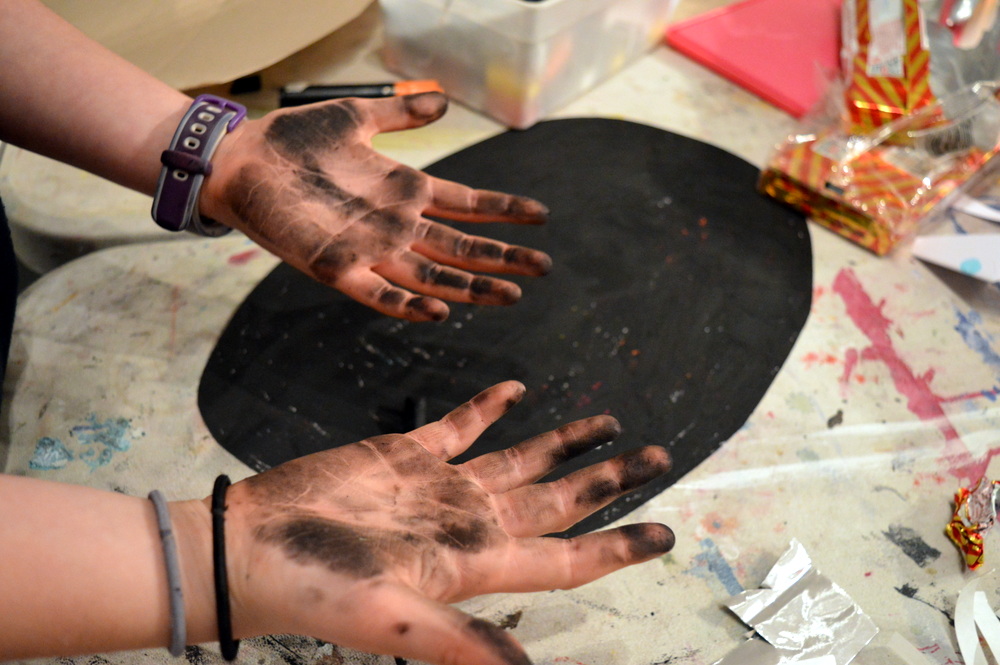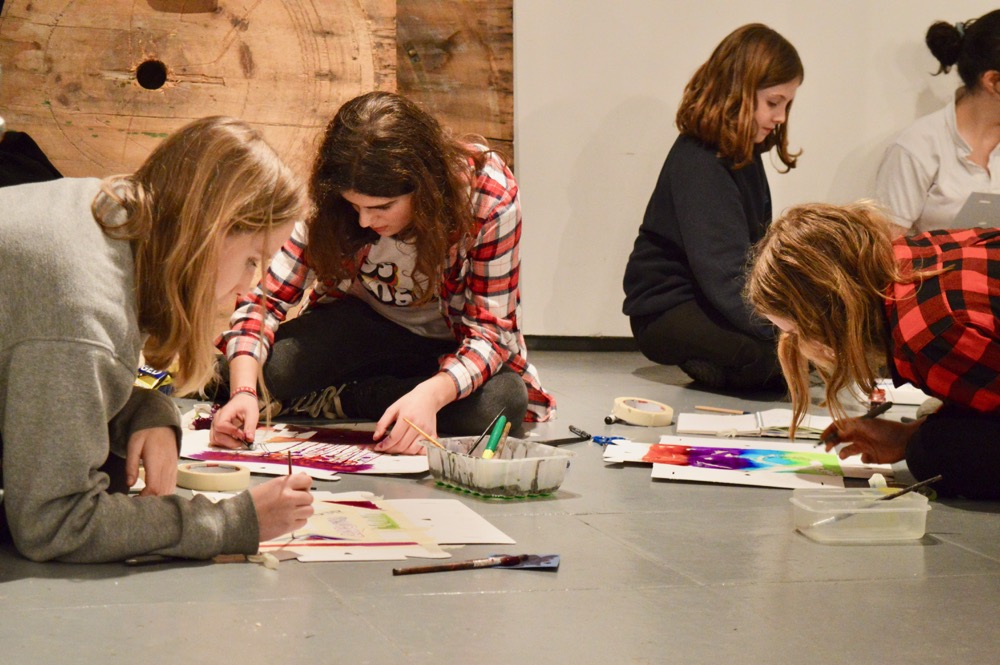Diary of a Sculptural Sketchbook
AccessArt member Emma Davies shares her working process through a sculptural sketchbook diary – working both outside and in the studio to recreate a record of a countryside walk.
If you would like to share your practice, please email us.

To access all content, I would like to join as…
AccessArt is a UK Charity and we believe everyone has the right to be creative. AccessArt provides inspiration to help us all reach our creative potential.



Sheila Ceccarelli
February 21, 2013 @ 3:57 pm
Emma I love this sculptural sketchbook – thank you so much for sharing it with AccessArt – it was a real privilege to read about the intimacies of your process and wonderful to see the finished piece unfold. I love the way you go back and forth between being immersed in the landscape and developing, building and reflecting on the ideas in the studio – you described the process so well! I love the way you bring the paper to life with the physical tearing and beautiful mark making. What I want to know is where will this lovely sculpture live now?
Emma Davies
February 25, 2013 @ 4:59 pm
Hi Shelia,
Thankyou so much for your feedback – it is geat to know that what I am trying to acheive and communicate I am actually doing so! It is one of the hardest things to do I think, to truly communicate to others what you see and experience. For me, the creative process/ who I am as a person/ my identity as an artist, how I live my life and how I share with others are all inextricably linked and inspire and inform my work. I have become so unispired by standard paper sizes and wanted the surface to be part of the work and reflect what it is I am inspired by, rather than placing squeezing an image in, constricting it and placing it onto a surface – the image is the surface. As to where it lives now…. well, I am in the process of making it’s cover, to protect it when it is not on display… and after that I am not sure! I have ideas… !
Trisha
February 22, 2013 @ 12:14 pm
Love this idea and your drawing style too. I work in Textiles and funnily enough, have been struggling the last week with how to turn original sketches of a Finnish lakeside into 3D pieces, toying with similar ideas, but in paper and fabric using additional acylic paints and machine embroidery. I got to the point when cutting felt wrong, not organic enough shapes and started to tear the paper. Love the way you draw the trees, very expressive, wonderful mark making, a joy to see.
Paula Briggs
February 22, 2013 @ 12:46 pm
Hi Trisha – it would be lovely to see some images if you ever feel like uploading them – you can post them here x
Emma Davies
February 25, 2013 @ 5:16 pm
Hi Trisha,
Thankyou for your lovely comments.The more I draw trees, the more I see them as beings with personalities and physical traits if their own – either pertaining to their speices or their individual lives – what animals they house, weather damage, geographical factors etc. When I draw them I want to encapsulate at least some of this, but being careful to not to be too hung up and rather to intstinctually respond and to harness the right techniques.
Would be really interested to see some of your work!
Emily West
May 21, 2013 @ 11:12 am
Emma, I love this fresh and sculptural approach to drawing and sketchbook making. Thank you for sharing your work and ideas!
Emma Davies
May 23, 2013 @ 5:00 pm
Thankyou Emily! My challenge is to keep them ‘fresh’ and not overdo with the more I do!
Paula MacGregor
September 7, 2013 @ 10:39 am
I am a book artist and enjoying manipulating the book structure to enhance the contents. http://www.paulamacgregor.com/bookworks
Emma Davies
September 9, 2013 @ 3:00 pm
Hi Paula,
Hi Paula, I have had a look at your website – thankyou. Yes, we have got similar interests! I am a bit of a collector – some would say hoarder – but then they don’t understand! I am in interested how we have different approaches to making books – mine are very rough around the edges – the method of constructing the book developing as I go along – and also, having limites craft skills, I emphasise the roughness rather than try and hide it. I like your book with the Victorian Wallpaper – although not as precious – I have an emotional connection I guess to the papers I use, as I collect them from my everyday life (such as potato sacks) and know which old piece of work has been sacrificed to make a new one. Best Wishes, Emma
Paula MacGregor
September 10, 2013 @ 12:37 pm
I also love organic torn edges and have made books in this way too.
I had a dream the other day about a train that was a sanatorium, there was a dividing wall running down the center of each open carriage, and beds were lined up against that center wall – everything had originally been pure white, but now there were signs of dereliction everywhere. I have made a model of the structure and will eventually make it into a book with a narrative.
My mum spent 3 years in a sanatorium during the early 50’s, I have her diaries which tell of her heart ache as well as some ‘memorabilia’ I think I might use that for the narrative.
This is not usually the way I work, I would normally have a narrative first and construct the book to suit that – so it will be interesting to have the structure first this time…
Emma Davies
October 23, 2013 @ 2:56 pm
Hi Paula,
Sorry I haven’t replied to this earlier. Your dream and process of creating a model of this is fascinating. I am about to branch out into constructing a stage set design for a project I am lead artist on – I am intrigued how I am going to make my small paper sculptures work on a larger scale!
I am interested to hear how your sanitorium project develops – especially as it is such a personal project for you and as you say you are reversing the way you normally work.
Best Wishes
Emma
June Nelson
October 20, 2013 @ 4:54 pm
Thank you very much for sharing this. It didn’t at first sight relate to my own practice but your process has given me some ideas for tackling a problem I have been wrestling with for a while. In addition, as an Artist Educator frequently called on to devise landscape workshops, it is a brilliant resource which I can see developing in all sorts of ways. It is very generous of you to share it.
Emma Davies
October 23, 2013 @ 2:49 pm
Dear June,
So pleased it has helped with your work. I am also and Educator and deliver lots of landscape projects and workshops. I am always trying to reinvent what I do and look at the landscape from many perspectives – as much as possible away from a white sheet of plain paper (although sometimes a white sheet is great for the simplicity of drawing and learning the technical side of things but can dampen the imagination)
I have a page on facebook if you want to like me – http://www.facebook.com/EmmaDaviesFineArtWorkshops
Best Wishes
Emma
Elaine Sellors
January 1, 2014 @ 4:04 pm
Diary of a Sculptural Sketchbook – Emma Davies
‘In the Studio – working out the method of construction’ – wow!
What an inspirational image in its own right – made me all excited and wanting to have a go at painting just pieces of paper ripped and standing in this way. The colours are beautiful!
Emma Davies
January 9, 2014 @ 4:30 pm
Hi Elaine,
Thank you! You have reminded me that keeping it simple is often the best way. At the moment I am embroiled in a different work entirely….. taking my sculptural works and exploring ways to use them as stage sets…. this has developed into a fully formed performance piece which is far from simple! Turns out for stage sets I can’t use cardboard due to fire regs, so I am exploring alternative ways that are cheap and that can keep that torn quality like ripped paper. The stage set is of a house and I wanted to use the cardboard (so just like these pieces of paper) to suggest sections of raggedy walls.
I am treating the costumes in much the same way – torn and worn edges.
This all started because I wanted to scale up the sculptures – and as my work is narrative based – and I am involved in theatre work, it just all came together. Sorry to go on but your comment was lovely and reminded me of what my starting point was,why I have developed my work further – and that not too panic as simple is best!
Through devloping the work in such a manner has become labour intensive… but I guess…. what your comment has also made me realise is that my experimentations with paper has really helped and inspired me with how I am approaching the whole design of the set and the costumes….. the layering of size, texture and colours. So the simplicity of material is often all you need to form the basis of a work.
Best Wishes
Emma
Paula MacGregor
January 10, 2014 @ 11:06 am
Hi Emma,
You can get a substance to spray on paper/card to make it fireproof. I had an exhibition in a library in London and they insisted one of the other exhibitors sprayed their cardboard installation with it. I have no idea what it was, but I am sure that you could find out now that you know it exists.
Fingers crossed – Paula
Emma Davies
January 10, 2014 @ 2:28 pm
Hi Paula,
Unfortunately I have explored that route – the cardboard needed would have to be single layer and not corrugated as the tech officer explained that when coated with the fire retardent the cardboard becomes too soggy. Could I find any company that sold single layer sheets? No!
So, I have had to compromise and am using chicken wire and material draped over that. With the performance looming on the 31st Jan… which icludes a film (shooting on Sunday) I have to now stick to this course of action!
The issue of exhibiting works made of cardboard though is an interesting one – as in my usual practice… cardboard takes centre stage…. as I have not yet exhibited the works (they are in development) I haven’t come across this problem yet. I do need to think about it though, as the works are supposed to be enviromentally aware,making art from recycled materials, keeping it as natural as possible.It is slightly defeating the object if I then have to coat ithe work with chemicals!
Fingers crossed are needed!
Best Wishes
Emma